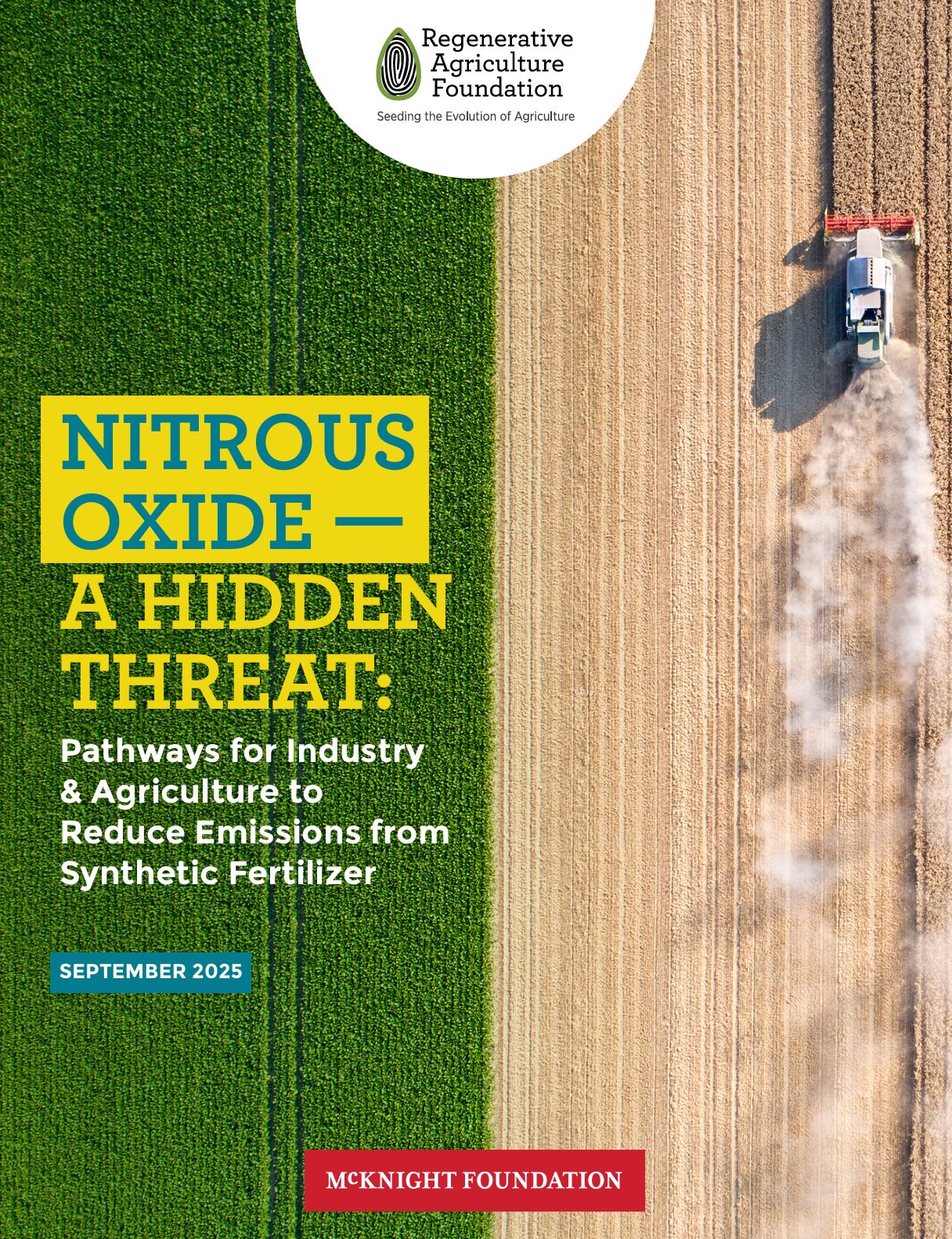Report: Nitrous Oxide – A Hidden Threat
It’s time to bring one of agriculture’s biggest climate challenges into the spotlight. NITROUS OXIDE — A HIDDEN THREAT dives into the overlooked but potent greenhouse gas that’s quietly contributing to climate change—N₂O. This eye-opening report uncovers how smarter fertilizer strategies and investments in innovation can help producers and farmers cut emissions without compromising productivity.
This report is a roadmap offering common-sense solutions for actors across the agriculture industry to take action now. It sets ambitious but achievable goals for the reduction of N2O emissions attributable to agriculture. Discover the tools, tactics, and policies that can turn nitrous oxide from a silent problem into a solvable one.
Frequently Asked Questions
1. How is N₂O emitted during the production and use of synthetic nitrogen fertilizer?
N₂O is emitted at two stages: industrial production and the application of fertilizer on farms and fields.
2. Why is agriculture a focus in reducing N₂O emissions?
Agriculture accounts for around 70–80% of human-caused N₂O emissions globally. Reducing emissions from this sector is crucial for climate change mitigation and environmental protection.
3. What are the key recommendations of the new report?
The report recommends:
- Optimizing fertilizer use through precision agriculture
- Adopting enhanced efficiency fertilizers
- Promoting legume-based rotations and cover cropping
- Improving manure management
- Investing in farmer education and incentives
4. Can we reduce N₂O emissions without affecting crop yields?
Yes. The report highlights that improved nitrogen use efficiency can maintain or even increase yields while reducing excess nitrogen that leads to N₂O emissions.
5. What role do policymakers play in reducing N₂O emissions?
Federal and state policymakers can implement:
- Subsidies or incentives for sustainable practices
- Regulations on fertilizer production and application
- Support for agricultural research and extension services
6. Is technology available to help reduce N₂O emissions?
Yes. Fertilizer producers can leverage existing technologies to reduce N₂O emissions during production. On-field tools such as Y-drops, soil sensors, decision support systems, and precision application equipment are available to optimize nitrogen use and reduce emissions.
7. Are there economic benefits to reducing N₂O emissions in agriculture?
Reducing N₂O emissions can lead to cost savings from more efficient fertilizer use, improve soil health, and open access to carbon markets or green financing. For example, fertilizer use is 39% of farmers input cost.
8. How urgent is action on N₂O emissions?
Very urgent. N₂O emissions are rising and not adequately addressed in most climate policies. Immediate action is needed to stay on track with climate goals such as the Paris Agreement.
9. What are the barriers to implementing the report’s recommendations?
Key barriers include:
- Lack of awareness or training
- High upfront costs
- Policy gaps or lack of incentives
- Variable soil and climate conditions
10. What role can consumers play?
Consumers can support sustainable agriculture by:
- Choosing food from sources that use climate-smart practices
- Reducing food waste, which indirectly reduces fertilizer demand
